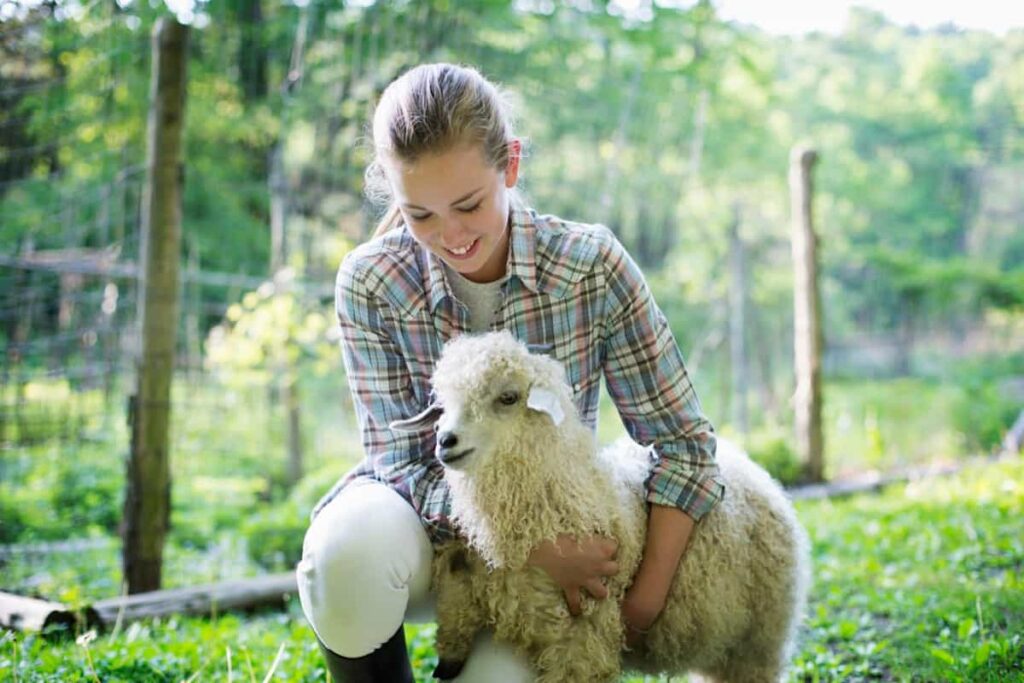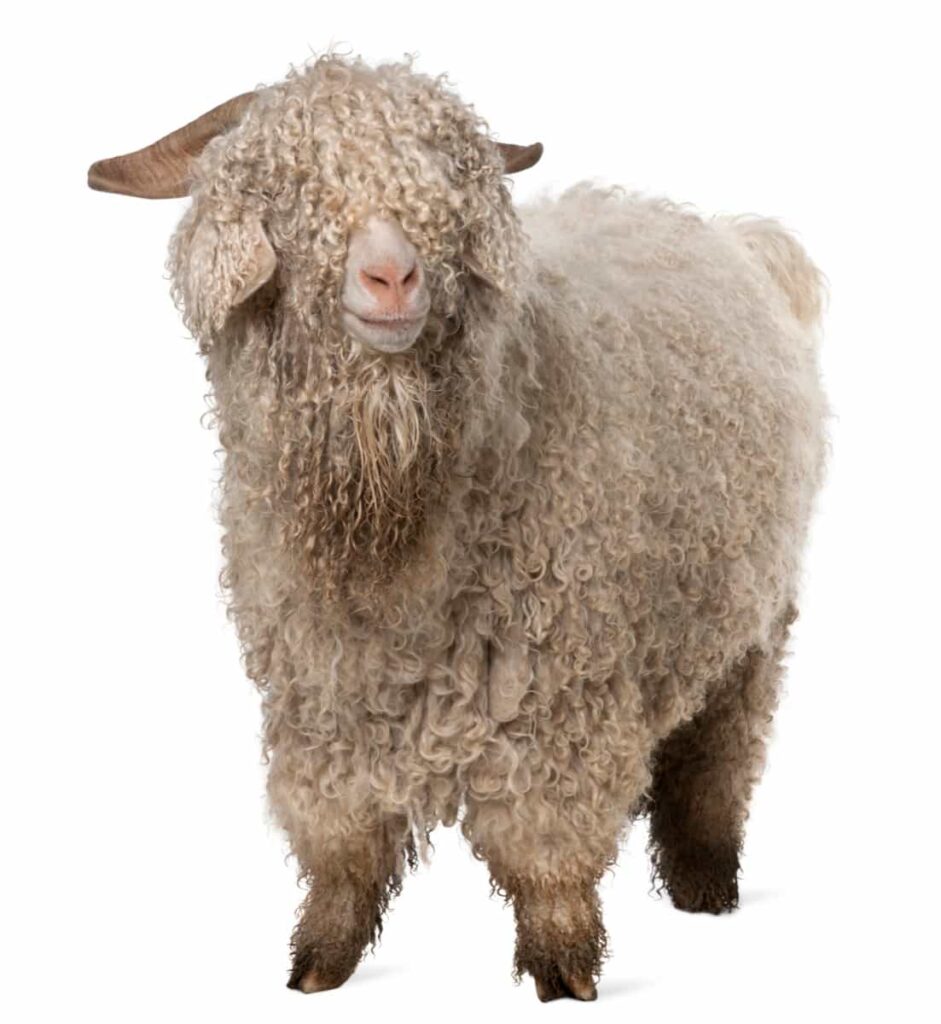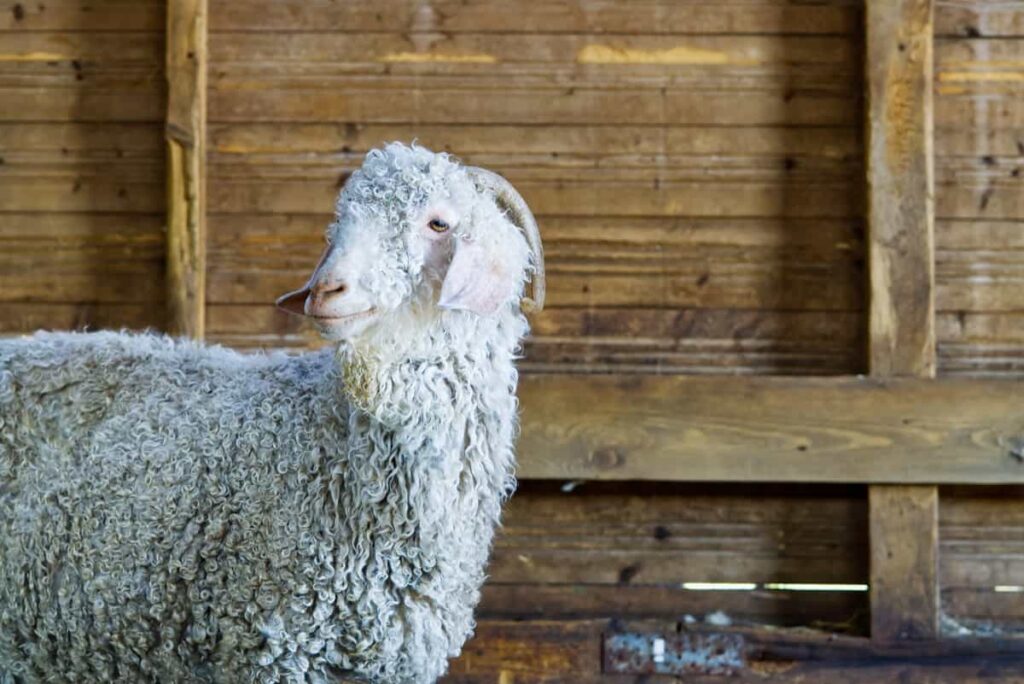Growing Angora goats for their gorgeous mohair is an exciting and profitable business opportunity. These animals are selectively bred for their long, plush fleece, which has several potential applications in the fashion, interior design, and craft industries. Successful Angora goat farming requires knowledge of the breed’s unique traits. Angora goats are tough and efficient animals that can survive in any environment.

They are herd animals that grow when kept with their breed. The best methods for raising Angora goats center on giving them a balanced diet, regularly grooming them, and proper shelter. It is also important to manage their breeding program and medical treatment to maintain a healthy and productive herd. Successful Angora goat farming requires expert knowledge and careful management.
Angora Goat Farming
What is Angora Goat Farming?
Angora goat farming is the practice of raising and breeding Angora goats to produce their high-quality mohair fleece. These animals are primarily raised for their luxurious fleece, which is used in producing textiles and clothing. Angora goats are hardy and adaptable and can thrive in a wide range of climates. They require a nutritious diet, regular grooming, and proper shelter to maintain their health and productivity.
History and Origin of Angora Goats
The Angora goat is a Turkish breed known for its production of mohair. It is found in many countries worldwide and has been used to create other breeds, such as the Indian Mohair, Soviet Mohair, Angora-Don, and Pygora.
- The origin of Angora goats is unknown.
- The earliest Western description of these goats was published in 1555 by Pierre Belon, who saw goats with snow-white wool while traveling in southern Turkey.
- From 1938 to 1952, Angora goats were shown on the back of the Turkish 50 lira.
- In 1960, there were more than 6 million Angora goats in Turkey, but the number fell sharply in the following years.
- As of 2004, the total goat population in Turkey was around 7.2 million, of which just over 5% were Angora goats, while the rest were hair goats.
- A conservation program for Angora goats was established in 2003 to protect and preserve the breed.
Characteristics of Angora Goats
- Angora goats are usually white but may also be black, brown, or grey.
- They are moderately small and stand about 50cm at the withers.
- They have a small head with semi-lop ears and are usually horned.
- They are covered in a coat of long ringlets of fine and lustrous mohair, which grows much longer than the outer hair coat.
- The face / coat of the these goats are normally in white color, but black, brown, and grey animals also occur.
- Angora goats are used for mohair production and meat.
- The average weight of a male Angora goat is 45kg, while females weigh around 35kg.
- Males stand at 66cm and females at 51cm.
- Angora goats are called Ankara Kecisi, Tiftik-Kecisi, Mohair goat, and Sybokke (South Africa).
Tips for Best Practices in Angora Goat Farming
- Angora goats require additional care as a fiber breed.
- Keep the goats’ bodies clean by washing them frequently with detergent or soap.
- Separate the male and female goats.
- Purchase good quality and disease-free goats.
- Provide them with high-quality food for good health and productivity.
- Avoid feeding them rotten or dirty food.
- Keep the housing clean and dry.
- Deworm and vaccinate the goats regularly.
- Provide clean and fresh water
Housing and Fencing Requirements in Angora Goat Farming
Angora goats require shelter for protection from harsh weather conditions, with good ventilation and fresh bedding provided regularly. A separate area for kidding should also be provided. A minimum height of 4-5 feet is needed for fencing as these goats are good climbers and jumpers. Chain-link, woven wire, or electric fence can be used, with proper securing at corners and gates. Pasture should be properly fenced for rotational grazing, and the fencing should be inspected regularly to prevent goats from getting caught or attacked by predators.
In case you missed it: Goat Breeding and Genetics for Improved Productivity and Disease Resistance

Feeding and Watering Guidelines for Angora Goat Farming
- Angora goats enjoy grazing and eating green grasses, plants, leaves, and corn.
- They also commonly eat roughage, including weeds, bark, and woody shrubs.
- The ideal food for Angora goats should contain about 20% protein and other necessary nutrients.
- It is important to provide clean and fresh water to the goats as per their demand.
- Feed them in small portions multiple times a day.
- Do not feed them rotten or dirty food.
- Provide salt licks to help meet their mineral needs.
- Make sure their feeders and water troughs are clean and free from debris.
- Adjust their feed according to the seasons and their production requirements.
Health and Wellness Considerations for Angora Goat Farming
- Regular deworming and vaccination.
- Proper nutrition and clean water supply.
- Regular hoof trimming and checking for foot rot.
- Preventing and treating external parasites, such as lice and mites.
- Monitoring for signs of illness or disease and seeking veterinary care when necessary.
- Proper sanitation and hygiene to prevent the spread of disease.
- Proper housing and ventilation prevent respiratory problems.
- Providing adequate space and exercise.
- Avoiding overcrowding and stressful conditions.
- Maintaining records of health and breeding history.
Breeding and Reproduction Strategies in Angora Goat Farming
In Angora Goat Farming, the bucks are the main element of the breeding program. They should be strong, healthy, powerful, and weigh up to 225 pounds. Every kid produced from the breeding program inherits about 50% of genetic characteristics from the bucks. During the breeding program, the bucks should be kept separate from the does except during mating. One buck can mate with numerous does depending on its physical condition. Once the breeding is complete and it becomes pregnant it will produce about one or two kids each time.
Harvesting Mohair from Angora Goat
- Angora goats are raised for their mohair or meat.
- Mohair is less fine than cashmere but has much higher yields.
- Unlike cashmere, combed from the goat’s coat, mohair is obtained by shearing the goat’s fleece.
- Mohair is typically sheared twice per year.
- South Africa largest producer of mohair, followed by Argentina, Lesotho, the United States, Turkey, Australia, and New Zealand.
- The quality of mohair can vary depending on genetics, nutrition, and environmental conditions.
- Mohair must be properly washed, carded, and spun to produce high-quality yarn or fabric.
- Mohair is used in different products, including clothing, blankets, and upholstery.
In case you missed it: Innovative Housing and Shelter Designs for Profitable Goat Farming

Conclusion
Angora goat farming requires proper knowledge of the breed’s characteristics and best practices for care and management. Adequate nutrition, housing, and fencing are important for their health and productivity. Regular health check-ups, disease prevention measures, and proper breeding strategies are essential for a successful and profitable operation.
- Goat Milking Practices and Equipment: A Beginner’s Guide
- Goat Farming for Fiber: Producing Mohair and Cashmere
- Maximizing Goat Milk Production: Tips for Dairy Goat Farmers
- Goat Farming as a Family Business: Strategies for Success
- Profitable Kenya Goat Breeds for Commercial Dairy and Meat Business
- Unlock the Secrets of Oberhasli Goat: Discover Raising and Management Practices
- Ultimate Guide to Myotonic Goats: Explore Profile to Raising
- Unlock the Secrets of Rove Goat: Discover Management Practices
- Ultimate Guide to Malwa Goat: Explore from Origin to Management Practices